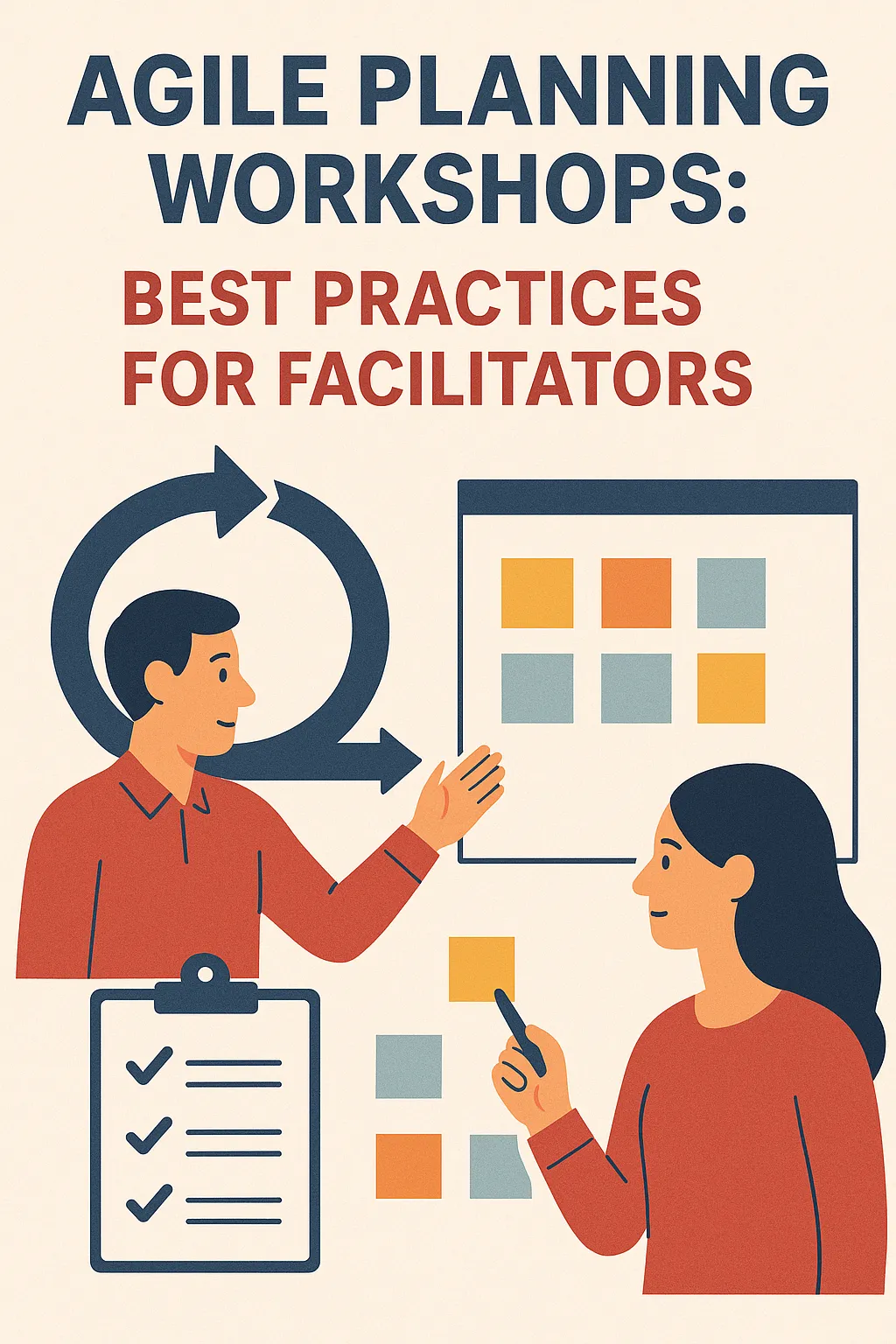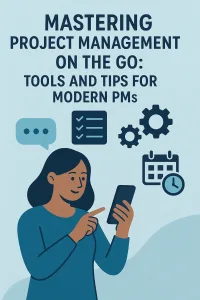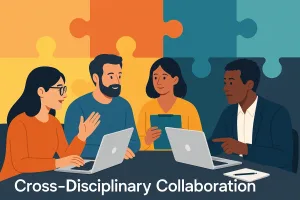Introduction to Agile Planning Workshops
Agile planning is a dynamic approach to project management that emphasizes flexibility, collaboration, and iterative progress. It is rooted in the Agile Manifesto, which prioritizes customer collaboration, responding to change, and delivering working software over rigidly following a plan. Agile planning is essential for teams aiming to adapt to changing requirements and deliver value incrementally. Here are some key aspects of agile planning and the significance of workshops in this framework:
Definition and Importance of Agile Planning
Agile Planning Defined: Agile planning involves creating a roadmap for project execution that is adaptable and responsive to change. It focuses on short-term goals, often referred to as iterations or sprints, allowing teams to reassess priorities and adjust their plans based on feedback and evolving project needs.
Importance in Project Management:
- Flexibility: Agile planning allows teams to pivot quickly in response to new information or changing market conditions, ensuring that the project remains aligned with stakeholder expectations.
- Enhanced Collaboration: It fosters a collaborative environment where team members, stakeholders, and customers can contribute to the planning process, leading to better alignment and shared understanding of project goals.
- Continuous Improvement: Agile planning encourages regular reflection and adaptation, enabling teams to learn from each iteration and improve their processes over time.
The Role of Workshops in Facilitating Agile Planning
Workshops play a crucial role in the agile planning process by providing a structured environment for collaboration and decision-making. They serve several key functions:
- Facilitating Communication: Workshops bring together diverse stakeholders, including team members, product owners, and customers, to discuss project goals, requirements, and priorities. This open dialogue helps to clarify expectations and align everyone on the project vision.
- Encouraging Participation: By engaging participants in interactive activities, workshops promote active involvement and ownership of the planning process. This engagement is vital for fostering a sense of commitment and accountability among team members.
- Visualizing Ideas: Workshops often utilize visual aids, such as storyboards, Kanban boards, or mind maps, to help participants visualize project components and workflows. This visualization aids in understanding complex concepts and facilitates better decision-making.
Audience Interest: Agile Coaches and Facilitators
Agile coaches and facilitators are pivotal in guiding teams through the agile planning process. Their expertise in facilitating workshops can significantly impact the effectiveness of agile planning efforts. Here’s why this audience is particularly interested in agile planning workshops:
- Skill Development: Agile coaches and facilitators are always looking to enhance their skills in leading workshops. Understanding best practices in agile planning can help them design more effective sessions that drive collaboration and innovation.
- Improving Team Dynamics: By mastering the art of facilitation, coaches can help teams navigate challenges, resolve conflicts, and build stronger relationships, ultimately leading to more successful project outcomes.
- Driving Agile Adoption: Effective workshops can serve as a catalyst for broader agile adoption within organizations. Coaches and facilitators play a crucial role in demonstrating the value of agile planning and helping teams embrace agile principles.
Understanding the Agile Framework
Agile planning is a crucial aspect of project management that emphasizes flexibility, collaboration, and customer satisfaction. To effectively facilitate agile planning workshops, it is essential to establish a foundational understanding of the agile methodology and its core principles. Here are some key points to consider:
Overview of Agile Principles and Values from the Agile Manifesto
The Agile Manifesto, created in 2001 by a group of software developers, outlines four fundamental values and twelve guiding principles that form the backbone of agile methodologies. The four key values are:
- Individuals and Interactions over Processes and Tools: Emphasizes the importance of team collaboration and communication.
- Working Software over Comprehensive Documentation: Focuses on delivering functional software rather than getting bogged down in extensive documentation.
- Customer Collaboration over Contract Negotiation: Encourages ongoing engagement with customers to ensure their needs are met throughout the project lifecycle.
- Responding to Change over Following a Plan: Highlights the need for adaptability and responsiveness to changing requirements.
These values promote a culture of continuous improvement and customer-centric development, which are essential for successful agile planning workshops.
The Iterative Nature of Agile and Its Impact on Planning
Agile methodologies are characterized by their iterative approach, which allows teams to break down projects into smaller, manageable increments called iterations or sprints. This iterative nature has several implications for planning:
- Flexibility: Agile planning is not a one-time event; it is an ongoing process that adapts to changes in project scope, customer feedback, and team dynamics. This flexibility allows teams to pivot quickly when new information arises.
- Incremental Delivery: By focusing on delivering small, functional pieces of the project, teams can gather feedback early and often, ensuring that the final product aligns with customer expectations.
- Continuous Improvement: Each iteration provides an opportunity for reflection and adjustment, enabling teams to refine their processes and improve efficiency over time.
This iterative approach fosters a dynamic planning environment where facilitators can guide teams in setting realistic goals and adjusting plans based on real-time insights.
Common Agile Methodologies Relevant to Planning
Several agile methodologies are widely used in project management, each with its own unique practices and frameworks. Here are a few that are particularly relevant to planning:
- Scrum: A popular framework that organizes work into time-boxed iterations called sprints, typically lasting two to four weeks. Scrum emphasizes roles (such as Scrum Master and Product Owner), ceremonies (like sprint planning and retrospectives), and artifacts (such as the product backlog) to facilitate effective planning and execution.
- Kanban: A visual management method that focuses on continuous delivery and flow. Kanban uses a board to visualize work in progress, allowing teams to manage their workflow and prioritize tasks effectively. This methodology is particularly useful for teams that require flexibility in their planning processes.
- Extreme Programming (XP): A methodology that emphasizes technical excellence and customer satisfaction through frequent releases and continuous feedback. XP practices, such as pair programming and test-driven development, can enhance the planning process by ensuring that technical considerations are integrated into project planning.
Key Objectives of Agile Planning Workshops
Agile planning workshops are crucial for setting the foundation of successful project execution. For agile coaches and facilitators, understanding the primary goals of these workshops is essential to guide teams effectively. Here are the key objectives that should be prioritized during agile planning workshops:
- Align Team Members on Project Goals and Objectives: One of the foremost objectives of an agile planning workshop is to ensure that all team members have a clear and unified understanding of the project goals. This alignment helps in minimizing misunderstandings and ensures that everyone is working towards the same outcomes. Facilitators should encourage discussions that clarify the project vision and objectives, allowing team members to voice their perspectives and insights.
- Foster Collaboration and Open Communication Among Participants: Agile methodologies thrive on collaboration. Workshops should create an environment where participants feel comfortable sharing ideas and feedback. Facilitators can employ techniques such as breakout sessions or group activities to promote interaction. This open communication not only enhances team dynamics but also leads to more innovative solutions as diverse viewpoints are considered.
- Encourage Creativity and Flexibility in Planning: Agile planning is not about rigid structures; it’s about adaptability. Facilitators should encourage teams to think creatively about how to approach their tasks and challenges. Techniques such as brainstorming sessions or design thinking exercises can help participants explore various possibilities and develop flexible plans that can evolve as the project progresses.
- Create a Shared Understanding of Project Deliverables and Timelines: It is vital for all team members to have a common understanding of what the project deliverables are and the timelines associated with them. Facilitators should guide the team in breaking down the project into manageable tasks and establishing realistic deadlines. Visual aids, such as Kanban boards or Gantt charts, can be effective tools to illustrate timelines and dependencies, ensuring that everyone is on the same page regarding expectations.
By focusing on these key objectives, agile coaches and facilitators can run effective planning workshops that not only set the stage for successful project execution but also empower teams to embrace the agile mindset.
Preparing for the Workshop
Running successful agile planning workshops requires meticulous preparation to ensure that all participants are engaged and that the objectives are met. Here’s a checklist of essential preparations for facilitators:
- Identify and Invite the Right Participants: Ensure that you include key stakeholders, team members, and any other relevant individuals who can contribute to the planning process. This may include product owners, scrum masters, and representatives from different departments. Their diverse perspectives will enrich discussions and lead to more comprehensive planning outcomes.
- Set Clear Objectives and Desired Outcomes: Before the workshop, define what you aim to achieve. This could range from creating a prioritized backlog to establishing sprint goals. Communicate these objectives to participants in advance to align expectations and encourage focused discussions during the workshop.
- Choose a Suitable Location and Tools: Depending on whether the workshop is in-person or virtual, select a location that is conducive to collaboration. For physical workshops, ensure the space is comfortable and equipped with necessary tools like whiteboards and sticky notes. For virtual workshops, choose reliable online platforms that facilitate interaction, such as video conferencing tools and collaborative software.
- Gather Necessary Data and Materials: Collect all relevant data and materials that will inform the planning process. This includes backlogs, previous sprint reviews, and any metrics that can provide insights into team performance and project progress. Having this information readily available will help participants make informed decisions and foster productive discussions.
By following these preparation steps, facilitators can create an environment that promotes collaboration, clarity, and effective planning, ultimately leading to successful agile workshops.
Facilitation Techniques for Engaging Workshops
Agile planning workshops are crucial for fostering collaboration and ensuring that all team members are aligned with project goals. As an Agile Coach or Facilitator, employing effective facilitation techniques can significantly enhance engagement and productivity during these sessions. Here are some essential tips and techniques to consider:
- Use Icebreakers and Team-Building Activities: Starting your workshop with icebreakers can help create a positive atmosphere and build rapport among participants. Activities that encourage sharing personal experiences or fun facts can break down barriers and make team members feel more comfortable contributing their ideas. This initial engagement sets a collaborative tone for the rest of the workshop.
- Implement Visual Aids: Utilizing visual aids such as whiteboards, sticky notes, and digital collaboration tools can greatly enhance understanding and retention of information. Visuals help to clarify complex concepts and allow participants to visualize their ideas. For instance, using a Kanban board can help teams track progress and identify bottlenecks in real-time, making discussions more productive.
- Encourage Participation Through Open-Ended Questions: To foster a culture of collaboration, it’s important to ask open-ended questions that invite discussion and exploration. Questions like “What challenges do you foresee in this project?” or “How can we improve our current processes?” encourage participants to think critically and share their insights. This approach not only promotes engagement but also empowers team members to take ownership of the planning process.
- Utilize Breakout Groups for Focused Discussions: Breaking participants into smaller groups can facilitate more focused discussions on specific topics. This technique allows for deeper exploration of ideas and encourages quieter team members to contribute without the pressure of speaking in a larger group. After breakout sessions, reconvening to share insights can help synthesize diverse perspectives and foster a sense of collective ownership over the planning outcomes.
By incorporating these facilitation techniques, Agile Coaches and Facilitators can create engaging and productive workshops that not only enhance collaboration but also drive successful project outcomes.
Adapting Agile Planning to Team Dynamics
Agile planning is a crucial aspect of project management that emphasizes flexibility, collaboration, and responsiveness to change. For agile coaches and facilitators, understanding how to tailor planning workshops to the unique dynamics of each team is essential for fostering an effective and productive environment. Here are some best practices to consider when adapting agile planning to meet the needs of different teams:
- Assess Team Maturity and Experience with Agile Methodologies: Before conducting a workshop, it is vital to evaluate the team’s familiarity with agile principles and practices. Teams with varying levels of experience may require different approaches. For instance, a team new to agile may benefit from more structured guidance and foundational training, while a more experienced team might thrive in a workshop that encourages autonomy and innovation. Understanding this maturity level allows facilitators to customize the content and pace of the workshop accordingly.
- Adapt the Planning Process Based on Team Size and Composition: The size and composition of the team can significantly impact the planning process. Smaller teams may engage in more intimate discussions and quicker decision-making, while larger teams might require more structured facilitation techniques to ensure everyone’s voice is heard. Additionally, consider the roles within the team; cross-functional teams may benefit from collaborative planning sessions that leverage diverse perspectives, whereas specialized teams might focus on specific areas of expertise.
- Consider Cultural Factors That May Influence Team Dynamics: Cultural backgrounds can shape how team members communicate, collaborate, and respond to feedback. Facilitators should be aware of these cultural factors and how they might affect team interactions during the workshop. For example, teams from cultures that value hierarchy may need encouragement to share ideas openly, while those from more egalitarian backgrounds might be more comfortable engaging in discussions. Tailoring the workshop to respect and incorporate these cultural nuances can enhance participation and effectiveness.
- Be Prepared to Adjust the Agenda Based on Team Feedback and Needs: Flexibility is a core principle of agile methodologies, and this should extend to the planning workshop itself. Facilitators should actively solicit feedback from participants throughout the session and be willing to adjust the agenda as needed. This responsiveness not only demonstrates respect for the team’s input but also helps ensure that the workshop remains relevant and valuable to the participants. Incorporating time for reflection and discussion can lead to richer insights and a more engaged team.
By implementing these best practices, agile coaches and facilitators can create a more inclusive and effective planning environment that aligns with the unique dynamics of each team. This tailored approach not only enhances the planning process but also fosters a culture of collaboration and continuous improvement within the team.
Common Challenges in Agile Planning Workshops
Agile planning workshops are crucial for aligning teams and setting the stage for successful project execution. However, facilitators often encounter several challenges that can hinder the effectiveness of these sessions. Here are some common obstacles and strategies to overcome them:
1. Addressing Resistance to Agile Practices
Challenge: Team members may resist adopting agile methodologies due to a lack of understanding or previous experiences with traditional project management approaches.
Strategy: To mitigate resistance, facilitators should:
- Educate: Provide clear explanations of agile principles and benefits. Use real-world examples to illustrate how agile can lead to better outcomes.
- Involve: Engage team members in discussions about their concerns and experiences. This inclusion can help them feel valued and more open to change.
- Pilot Programs: Implement small-scale agile initiatives to demonstrate success before a full rollout, allowing team members to see the benefits firsthand.
2. Handling Conflicts and Differing Opinions
Challenge: Conflicts may arise during discussions, especially when team members have differing opinions on priorities or approaches.
Strategy: Effective conflict resolution is key:
- Establish Ground Rules: Set clear expectations for respectful communication and active listening at the beginning of the workshop.
- Facilitate Open Dialogue: Encourage participants to express their viewpoints while guiding the conversation to remain constructive. Use techniques like “fist of five” to gauge consensus.
- Mediation Techniques: If conflicts escalate, employ mediation strategies to help parties find common ground and reach a consensus.
3. Managing Time Constraints
Challenge: Time limitations can prevent thorough discussions of all agenda items, leading to rushed decisions or incomplete planning.
Strategy: To manage time effectively:
- Prioritize Agenda Items: Identify the most critical topics that need to be addressed and allocate time accordingly. Use time-boxing techniques to keep discussions focused.
- Use Visual Aids: Tools like Kanban boards or digital collaboration platforms can help streamline discussions and keep track of progress.
- Regular Check-ins: Periodically assess the time spent on each agenda item and adjust as necessary to ensure all critical topics are covered.
4. Keeping Participants Focused and Engaged
Challenge: Maintaining participant engagement throughout the workshop can be difficult, especially during lengthy sessions.
Strategy: To enhance engagement:
- Interactive Activities: Incorporate activities such as breakout sessions, brainstorming exercises, or role-playing to keep energy levels high.
- Variety in Presentation: Use a mix of presentation styles, including visuals, storytelling, and hands-on activities, to cater to different learning preferences.
- Frequent Breaks: Schedule short breaks to allow participants to recharge, which can help maintain focus during discussions.
By anticipating these challenges and implementing effective strategies, facilitators can create a more productive and engaging environment for agile planning workshops. This proactive approach not only enhances the workshop experience but also fosters a culture of collaboration and continuous improvement within the team.
Post-Workshop Activities
After conducting an agile planning workshop, the follow-up actions are crucial to reinforce the outcomes and ensure that the momentum gained during the session is not lost. Here are some essential tips and techniques for facilitators to effectively manage post-workshop activities:
- Document Key Decisions and Action Items: It is vital to capture all significant decisions made during the workshop, along with specific action items assigned to team members. This documentation serves as a reference point for accountability and clarity moving forward. Ensure that these notes are clear, concise, and accessible to all participants.
- Share Outcomes with All Stakeholders: Transparency is key in agile environments. Sharing the outcomes of the workshop with all relevant stakeholders helps to keep everyone informed and engaged. This can be done through a summary report or a presentation that highlights the key decisions, action items, and any changes to the project plan. By doing so, you foster a sense of ownership and collaboration among team members and stakeholders alike.
- Schedule Follow-Up Meetings: To assess the progress on the action items identified during the workshop, it is important to schedule follow-up meetings. These meetings should be regular and structured, allowing team members to report on their progress, discuss challenges, and adjust plans as necessary. This ongoing dialogue helps to maintain focus and accountability, ensuring that the workshop’s outcomes are effectively implemented.
- Encourage Continuous Feedback: Feedback is a critical component of the agile methodology. After the workshop, encourage participants to provide feedback on the workshop process itself and the outcomes achieved. This can be done through surveys, one-on-one discussions, or team retrospectives. Gathering feedback not only helps to improve future workshops but also reinforces a culture of continuous improvement within the team.
By implementing these post-workshop activities, facilitators can significantly enhance the effectiveness of agile planning workshops, ensuring that the insights gained and decisions made translate into actionable results that drive project success.
Conclusion
Agile planning workshops play a pivotal role in ensuring that teams remain aligned, focused, and adaptable to change. These workshops are not just a formality; they are essential for fostering collaboration, enhancing communication, and driving project success. By engaging stakeholders and team members in a structured yet flexible environment, facilitators can help clarify goals, prioritize tasks, and establish a shared vision that guides the project forward.
As agile coaches and facilitators, it is crucial to continuously refine your skills and techniques. The landscape of agile methodologies is ever-evolving, and staying updated with the latest practices can significantly enhance the effectiveness of your workshops. Consider seeking feedback from participants, exploring new facilitation tools, and participating in professional development opportunities to sharpen your approach.
Find out more about Shaun Stoltz https://www.shaunstoltz.com/about/.
This post was written by an AI and reviewed/edited by a human.



